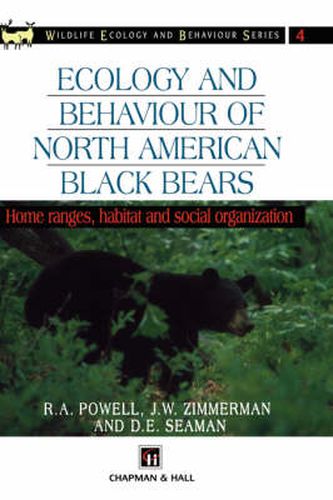Readings Newsletter
Become a Readings Member to make your shopping experience even easier.
Sign in or sign up for free!
You’re not far away from qualifying for FREE standard shipping within Australia
You’ve qualified for FREE standard shipping within Australia
The cart is loading…






What main factors affect mammalian home-range and dynamics? To what extent do constraints on home range characteristics vary between the sexes? This book aims to address these issues by concentrating the authors’ experience in studies of home ranges in general and focusing on their studies of the black bears of the Pisgah Forest, North Carolina, in particular. The authors provide an overview of black bears and methods for their study before discussing concepts of home-range; developing predictive habitat quality models; addressing influences of food production on social organization; and exploring the mating behaviour of male bears. This volume should be of interest to wildlife biologists working for federal, state or provincial governments, or working for conservation and environmental organizations, as well as ecologists, ethologists, conservation biologists, mammalogosts in universities, postgraduates and undergraduates.
$9.00 standard shipping within Australia
FREE standard shipping within Australia for orders over $100.00
Express & International shipping calculated at checkout
What main factors affect mammalian home-range and dynamics? To what extent do constraints on home range characteristics vary between the sexes? This book aims to address these issues by concentrating the authors’ experience in studies of home ranges in general and focusing on their studies of the black bears of the Pisgah Forest, North Carolina, in particular. The authors provide an overview of black bears and methods for their study before discussing concepts of home-range; developing predictive habitat quality models; addressing influences of food production on social organization; and exploring the mating behaviour of male bears. This volume should be of interest to wildlife biologists working for federal, state or provincial governments, or working for conservation and environmental organizations, as well as ecologists, ethologists, conservation biologists, mammalogosts in universities, postgraduates and undergraduates.